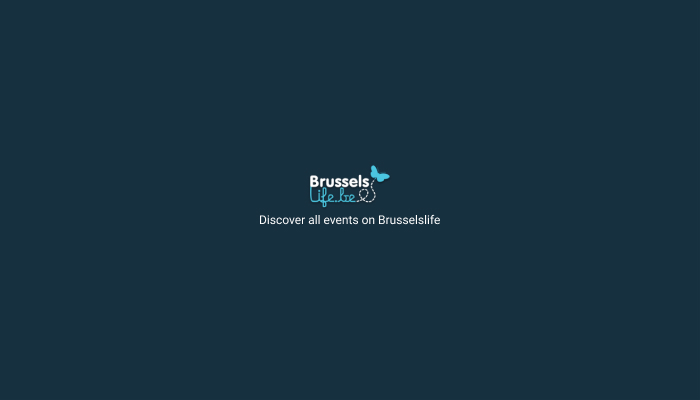Ernest Pignon-Ernest - Empreintes
13 Dec 2018 - 10 Feb 2019

Welcoming Ernest Pignon-Ernest (Nice, 1942) to the Botanique was not an obvious choice. The man is very much in demand, exhibited successfully all over and, since his big Rétrospective du MaMac, in Nice, in 2016, his aura has expanded to the point of condemning him to never stop.
-
Botanique - 236 Rue Royale 1210
Parisian gallery Lelong & Co, who have represented him for some thirty years, allow this seasoned traveller to be forward-looking while covering his back, in the sense of managing his work when it comes to loaning it to institutions. Like here at the Botanique.
The idea of a Pignon-Ernest exhibition came from Marie Papazoglou and the artist quickly saw the merits of a visit to Brussels where his work had not been exhibited. Hence this event that represents an immersion in his universe, which so conveniently focuses on the cause of humanity in peril.
Coming from a very modest background in Nice, ever since he was a child Ernest Pignon-Ernest demonstrated a gift for drawing. But it was as a self-taught artist that, years later, he emerged onto the art scene… at a tangent.
At first he tried painting, but it rapidly occurred to him that wanting to paint like Picasso was a delusion. His encounter with “Guernica” was decisive in that regard.
Coming from the left, having been awakened at a young age to the cause of social justice, he found himself, somewhat by chance, involved in protest art, or street art.
When, in 1966, he learned that, a few miles from his workshop in Méthamis in the Vaucluse, the French Nuclear Force was setting up shop on the Plateau d’Albion, he decided to act, to react, in some other way than painting a picture.
“It took me a few months to understand the obvious fact that it wasn’t possible for me to capture what was happening there on a canvas: this turning point in the history of humanity. Man can, with nuclear weapons, annihilate humanity, there are hundreds of Hiroshimas clustered under the lavender fields.”
And Pignon-Ernest discovered, at that moment, what would later become, without knowing it, the life blood of all his future interventions: “It became clear that it was the places themselves that had been perverted and were becoming vessels for these contradictions, the tensions, this dramatic tension. That it was the places themselves that needed to be stigmatised.”
On the Plateau d’Albion, the artist took action with a collage of stencilled images reproducing the famous photography of the aftermath of Hiroshima and Nagasaki. Stencils directly onto the rocks and walls and roads of the Plateau d’Albion.
“I didn’t anticipate the impact of this protest. Obviously, I didn’t realise that making life size pictures of people in a location would be a recurring theme in my future career.”
Taken from the booklet “A conversation with Ernest Pignon-Ernest”, published by Editions Tandem for the Botanique exhibition, these reflections allow us to understand what the future creative path of Ernest Pignon-Ernest would be (or was), in half a century of adventures around the world.
It is a precis of that journey, in a few key moments, that this Ernest Pignon-Ernest exhibition at the Botanique seeks to present. Having abandoned stencils in favour of provocative and more numerous urban interventions, the artist chose to turn to silk screen printing for its ephemeral character: it can be torn, and erased by the passing of time.
And always in the service of dignity.
“What I’m offering is a tangible intervention into reality and the symbolic, political, religious, mythological, temporal and anthropological reactions it provokes.”
“The exhibitions that trace these actions (sometimes years apart), I conceive of them as exposing the method, the building blocks of the creative process.”
The list of interventions is long, between 1971 and 2015. Some of those at the Botanique demonstrate d’Ernest Pignon-Ernest’s process when he works on a site, the research, from historical documents to people’s present-day concerns, from the intrinsic memory engrained in the locations to the reality of the terrain. From studies and sketches to the final, concrete creation in situ (at night, and without authorisation), preserved in photos the artist took after the fact.
At the Botanique, Ernest Pignon-Ernest has focused on studies and photographs of “La Commune”, his first intervention with large screen prints stuck to the walls of Paris for the centenary of the Commune, in 1971.
The twinning of Nice and Cape Town, 1974: announced in the middle of Apartheid; added to that is his “Piéta africaine” in Soweto, in 2002. Abortion, in Paris and Tours, in 1975. Pasolini, in 1980. Rubens, in Antwerp, in 1982. Naples, 1988, 1990, 1992, 1995. Behind the glass, Paris, Lyon, 1996. Prison, Lyon, 2012.
Portraits of poets are a common theme, as Ernest Pignon-Ernest has always fraternised with them. From Rimbaud to Desnos, from Genet to Darwich.
A great moment of tension and emotion.
Roger Pierre Turine

Botanique
236 Rue Royale 1210
The former botanical gardens provide the unique location for the stylish cultural centre of the French community and are a great place to relax. Concerts are held in the intimate surroundings of its eight spaces and multipurpose halls, of which the most famous are the Orangerie, the Rotonde, the Museum, and the Witloof Bar.
Read More











